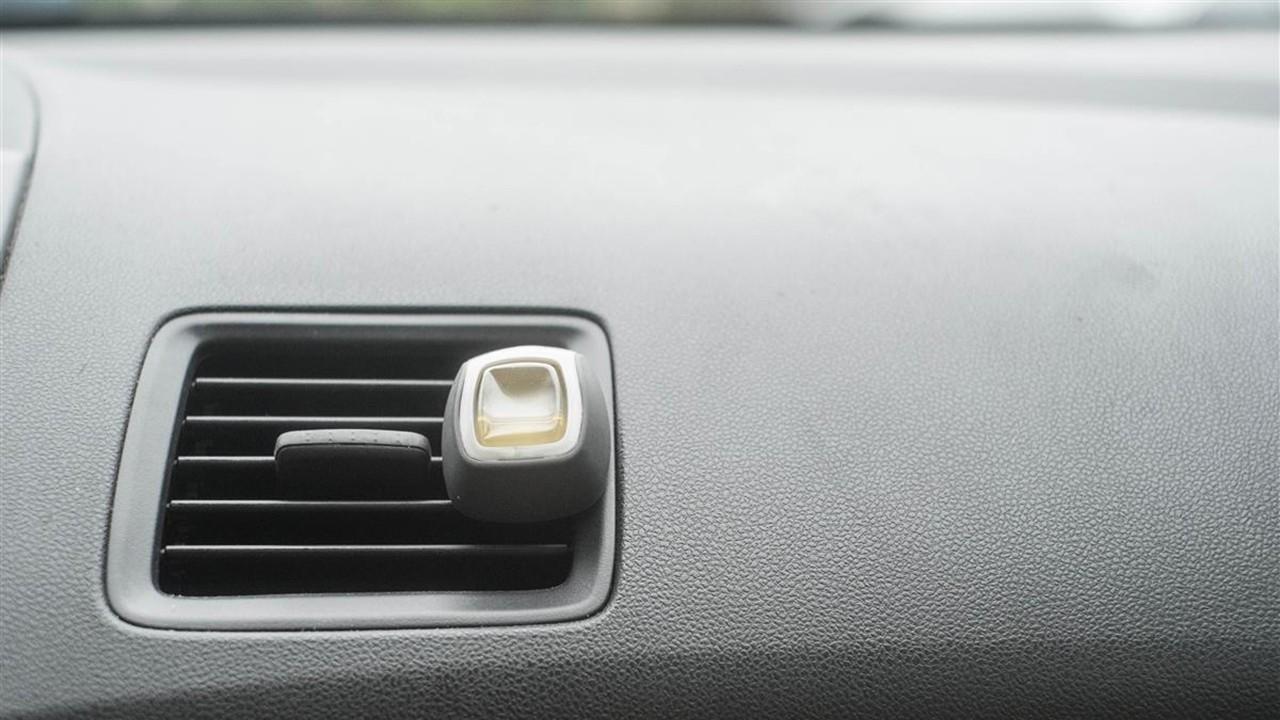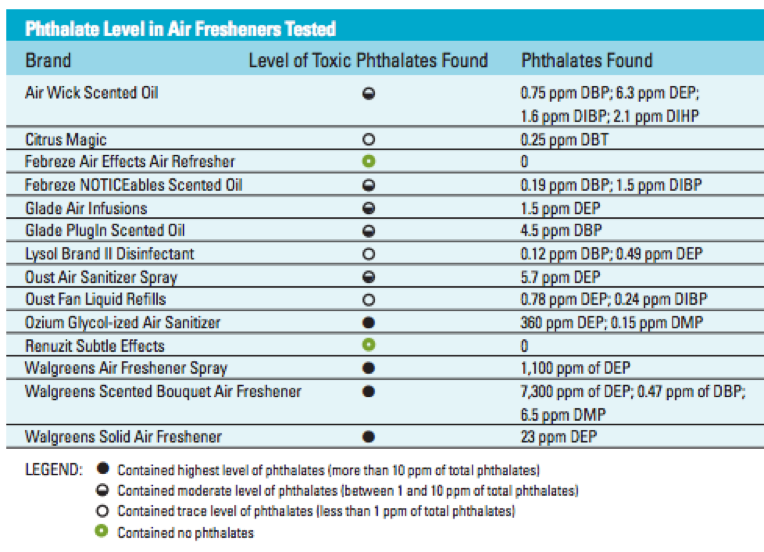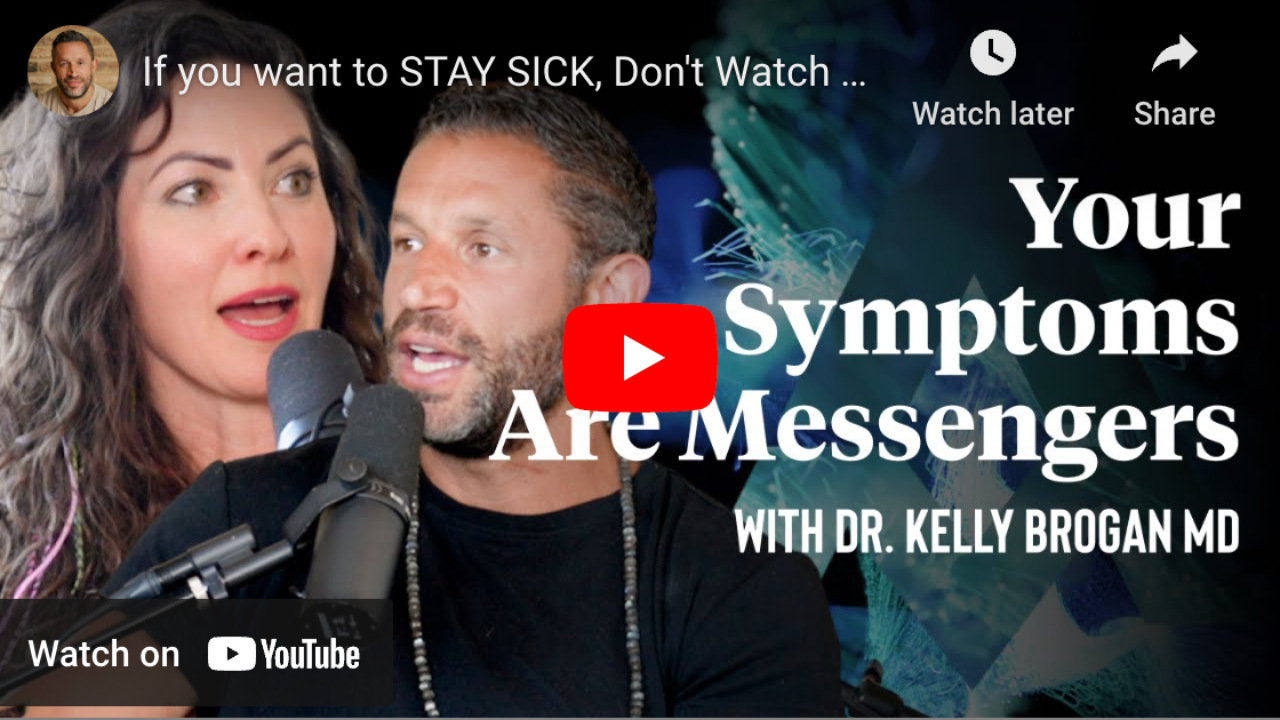Is Your Uber Air Freshener Making You Sick?

I opened the window to the 27 degree NYC air. My driver asked if I wanted him to turn the heat off, and I said, “no it’s the air freshener. It’s really too much.”
“Too much?! You’re supposed to like it!” he exclaimed with exasperation in his thick Greek accent.
Thus ensued a discussion about the little known risks to both drivers, passengers, and other unwitting air breathers in today’s service industries.
He unclipped his noxious Glade stink bomb and put it in his glove box. He said that I was “sweet” so he would do it for me.
I’m hoping that more drivers will do it for other reasons - the very reasons we are here to uncover today so that we can secure truly fresh air in public spaces...
VOC Nation
We are being exposed to air fresheners more and more in our shared-ride economy. It’s almost like we’ve gotten used to fake coverups and now feel that, no matter what the world looks like, or what a car smells like, we can create an illusion of ok-ness.
Many people are connecting the dots, recognizing that that air “fresheners” give them headaches, itchiness, and coughs. But what exactly are in air fresheners?
It’s not easy to find the answer to this question. Generally, air fresheners are made of Volatile Organic Compounds (VOCs), which are synthetic chemicals that can float through the air. I tried hunting down the ingredients in Febreze Car Vent Clips, one of the most popular air fresheners used by Uber drivers. I was amazed to see that the three ingredients listed on the Febreze website are “odor blockers, odor eliminators, and fragrance.”

What does that actually mean?! Clicking through the site leads to several dead-ends, but after searching the ingredients on this Procter & Gamble page, I found an alarming 19-page list of potential fragrance ingredients (1).

There are too many unpronounceable chemicals to investigate one-by-one. But we can probably agree that the sheer number of synthetic chemicals potentially found in air fresheners is scary. Let’s examine some of the most common air freshener ingredients.
Benzene, and styrene, and phthalates, oh my!
A large study that analyzed 74 popular air fresheners (2) found that they contain over 350 chemical and allergenic VOCs. VOCs found in air fresheners include benzene, formaldehyde, styrene, and phthalates. Many of these VOCs are known carcinogens that can damage your health and the health of your future children.
Benzene has been classified as a known carcinogen by the EPA, WHO, and other agencies (3). Benzene damages DNA and has been linked to human mutations. Similarly, formaldehyde is classified as a human carcinogen (4) by the International Agency for Research on Cancer (IARC) and the National Toxicology Program. Alarmingly, epidemiological studies link chronic exposure to either benzene or formaldehyde to leukemia (5, 6).
Short term exposure to styrene can induce nausea, impaired balance, and allergies. Several studies have shown that long-term styrene exposure adversely affects the Central Nervous System (CNS). Epidemiologic studies show that styrene workers had increased mortality or incidences of cancers like leukemia and lymphoma (7).
Many air fresheners contain phthalates, a group of man-made chemicals that disperse fragrances. People have been wary of phthalates since the 1990s because of their hormone-disrupting effects. While some phthalates have been banned from toys, phthalates are still used in many consumer products like plastic containers, cosmetics, fragrances, furniture, and air fresheners.
In 2007, the Natural Resources Defense Council (NRDC) tested 14 popular air fresheners that did not list phthalates as an ingredient (8). Several of these air fresheners were marketed as “unscented” or “all natural.” Yet, 12 of these 14 fresheners contained phthalates!

Why does this hidden ingredient matter? When phthalates are released in the air, they can enter your bloodstream through skin contact and inhalation. These are small molecules that easily cross skin and lung barriers (9).
If you’ve coughed or felt itchy after spending time in a hired car like Uber with overpowering air freshener, you’re not alone. Phthalates have been shown to worsen allergic symptoms, especially asthma and eczema (10). One study found that men with high urinary levels of phthalates suffered from impaired lung function (11).
The effects of phthalates can go beyond short-term discomforts. Known hormone disruptors, phthalates are linked to reproductive and developmental toxicities (12). Phthalates can also mess with your thyroid.
One study found that phthalate exposure harmed men’s fertility. Men with high urine phthalate concentrations had low levels of reproductive hormones and high levels of DNA damage in sperm cells (13). Another study showed that phthalate exposure increased the risk of endometriosis in women (14). Further, women with higher phthalate levels had more pregnancy complications, including preeclampsia and spontaneous abortion (15). And yet another study showed that phthalates led to implantation failure during in vitro fertilization.
To recap: the VOCs found in air fresheners, especially formaldehyde, benzene, styrene, and phthalates, can harm your skin, lungs, hormones, and fertility. Unfortunately, most air fresheners will not list these ingredients.
Know better, do better: ditch VOCs
Thankfully, there are natural ways to aromatherapize a shared airspace.
Baking soda and charcoal are effective deodorizers. In my office, I diffuse essential oils. Essential oils subtly enhance both the scent of the space and the experience of being in it. Since cars, particularly new ones, are already a minefield of off-gassing chemicals (16), let’s not add insult to injury.
Let Uber’s CEO know you care, and remember that voting with your dollar is a powerful form of activism.
Interested in more insights and tools to help you Own Your Self?
My newest book, Own Your Self, helps you discover the meaning behind your symptoms and your struggle as a way to reclaim your health and your Self. Click below to claim your copy today.
References
- http://www.pgproductsafety.com/productsafety/ingredients/Perfume_and_Scents.pdf
- http://ec.europa.eu/health/ph_risk/committees/04_scher/docs/scher_o_026.pdf
- https://www.cancer.org/cancer/cancer-causes/benzene.html
- https://ntp.niehs.nih.gov/ntp/roc/content/profiles/formaldehyde.pdf
- https://www.ncbi.nlm.nih.gov/pmc/articles/PMC3447593/
- https://www.ncbi.nlm.nih.gov/pmc/articles/PMC2839060/
- https://www.ncbi.nlm.nih.gov/pmc/articles/PMC3165940/
- https://www.nrdc.org/sites/default/files/fairfresheners.pdf
- http://link.springer.com/chapter/10.1007/978-3-642-80340-6_17
- http://www.jstor.org/stable/3838079?seq=1#page_scan_tab_contents
- https://www.ncbi.nlm.nih.gov/pmc/articles/PMC1241923/
- http://www.sciencedirect.com/science/article/pii/S1438463907001125
- http://oem.bmj.com/content/62/11/806.full
- https://www.ncbi.nlm.nih.gov/pubmed/12832380
- http://oem.bmj.com/content/62/11/806.full
- http://www.sciencedirect.com/science/article/pii/S1001074213604593
Want to continue reading?
Enter your details below to read more and receive updates via email.










